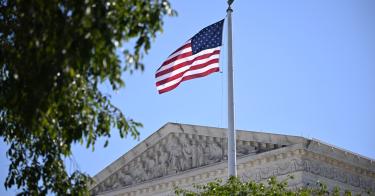For decades, there’s been confusion regarding what waters are regulated under the Clean Water Act.
As a result, property owners sometimes unwittingly find themselves facing civil and criminal penalties because they didn’t secure a permit for engaging even in normal activities like farming or homebuilding.
Sackett v. EPA, a Supreme Court case heard in October, could finally provide some clarity. The opinion is expected in the first half of this year, but the Biden administration didn’t wait. Instead, it jumped the gun, issuing yet another rule defining regulated waters that will only create more confusion.
The Clean Water Act authorizes the federal government to regulate “navigable waters.” This includes the term “waters of the United States,” referred to as WOTUS.
>>> Supreme Court Can and Should Resolve “Waters of the United States” Issue
The Environmental Protection Agency and the Army Corps of Engineers have repeatedly taken a vague and overly broad view of WOTUS. Since 2000, the Supreme Court has twice struck down their overreach, most recently in Rapanos v. United States (2006).
Justice Antonin Scalia wrote an opinion in Rapanos that could have provided much-needed clarity. Unfortunately, his was a plurality opinion, without the necessary five votes for a majority.
Scalia, along with three current panel members—Chief Justice John G. Roberts Jr. and Justices Samuel Alito and Clarence Thomas—explained that the statute covers only relatively permanent waters such as rivers and streams. At a bare minimum, there must be “the ordinary presence of water.”
The plurality also clarified what constitutes “adjacent wetlands” that can be regulated under the Clean Water Act, a key issue in Sackett. Citing previous court opinions, the plurality stated that an adjacent wetland must abut or adjoin a regulated water. Specifically, the wetland must have a continuous surface connection with the regulated water, “making it difficult to determine where the ‘water’ ends and the ‘wetland’ begins.”
The definition of federally regulated waters is critical for property owners, such as the Sackett family.
The EPA threatened them with $75,000-per-day fines simply for placing gravel on virtually dry land. Intending to build a house in a largely developed subdivision, they had no idea that Washington would one day decide that their land was water subject to the Clean Water Act.
Any notion that the EPA or Corps of Engineers will provide the necessary clarity is folly, especially since their implementation of the law is what caused the problems. And the Biden administration’s just-established WOTUS rule makes it perfectly clear that the agencies won’t be helping matters.
Instead of waiting for the Supreme Court to rule on Sackett, the administration plunged ahead with its new rule, even though the court’s ruling will likely render key aspects of it moot. This hasty action demonstrates no appreciation for the massive confusion that already exists among property owners.
>>> Supreme Court Was Right To Block the EPA’s Unconstitutional Power Grab
The rule relies heavily on now-former Justice Anthony Kennedy’s unworkable and likely soon-to-be rejected “significant nexus test” articulated in his Rapanos opinion. For example, the new rule states that certain wetlands can be regulated if they significantly affect the chemical, physical or biological integrity of various regulated waters, either by themselves or in combination with similarly situated waters in the region.
This vague and subjective language would continue to allow the government to justify regulation based on tenuous connections. It makes it difficult for property owners to know if the law applies to them and goes well beyond regulating abutting wetlands.
A decade after Rapanos, Justice Kennedy argued, “The Clean Water Act is unique in both being quite vague in its reach, arguably unconstitutionally vague, and certainly harsh in the civil and criminal sanctions it puts into practice.”
This needs to change and, with Sackett, the Supreme Court has an opportunity to provide much-needed clarity that is consistent with the Clean Water Act. The Supreme Court doesn’t need to get creative or reinvent the wheel. It has a brilliant opinion by Justice Scalia and three current justices to use as the foundation of its opinion.
This piece originally appeared in The Washington Times



